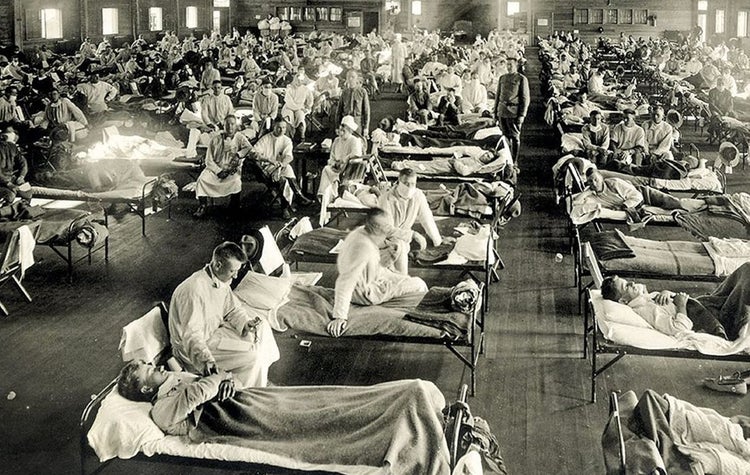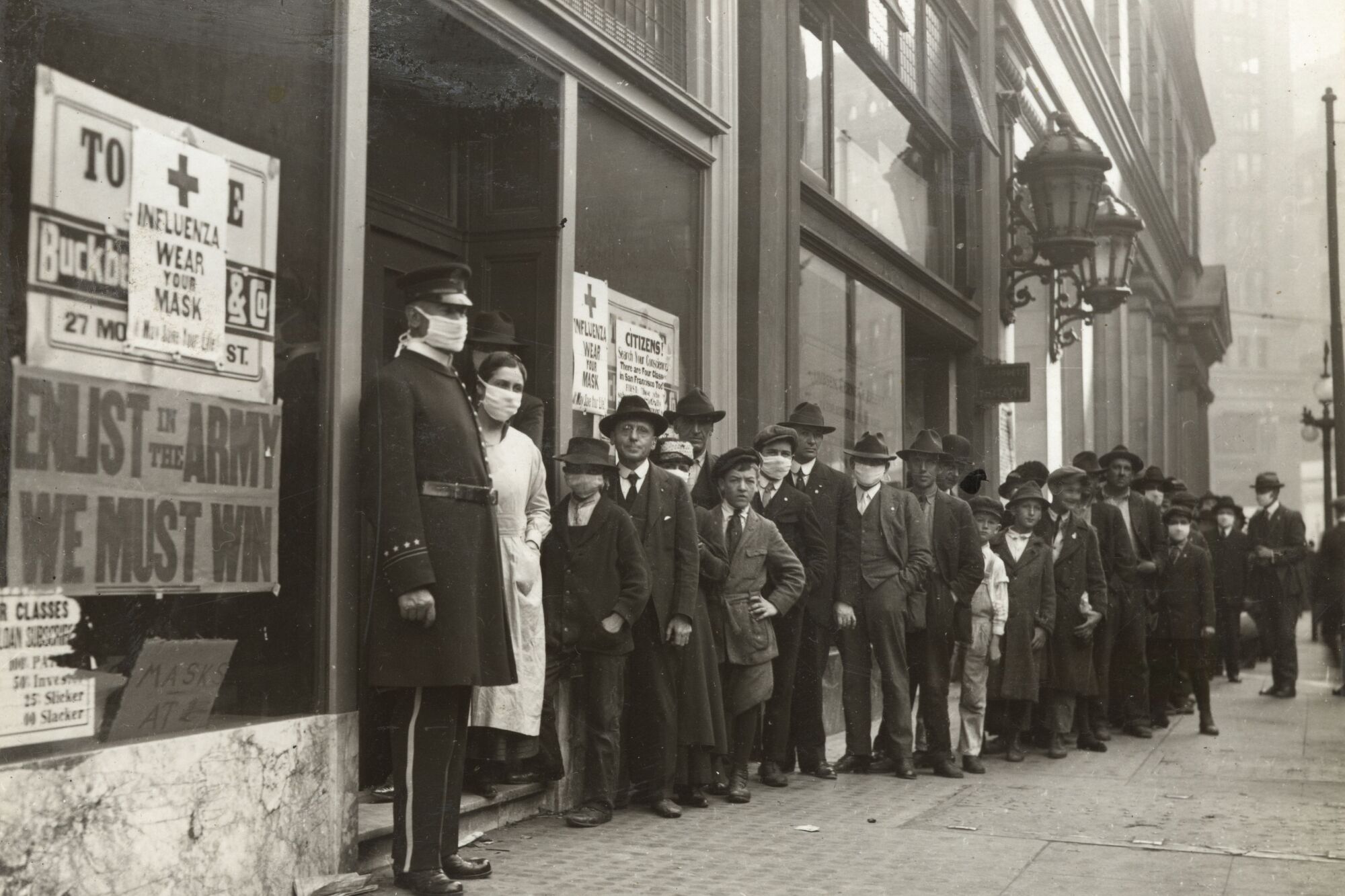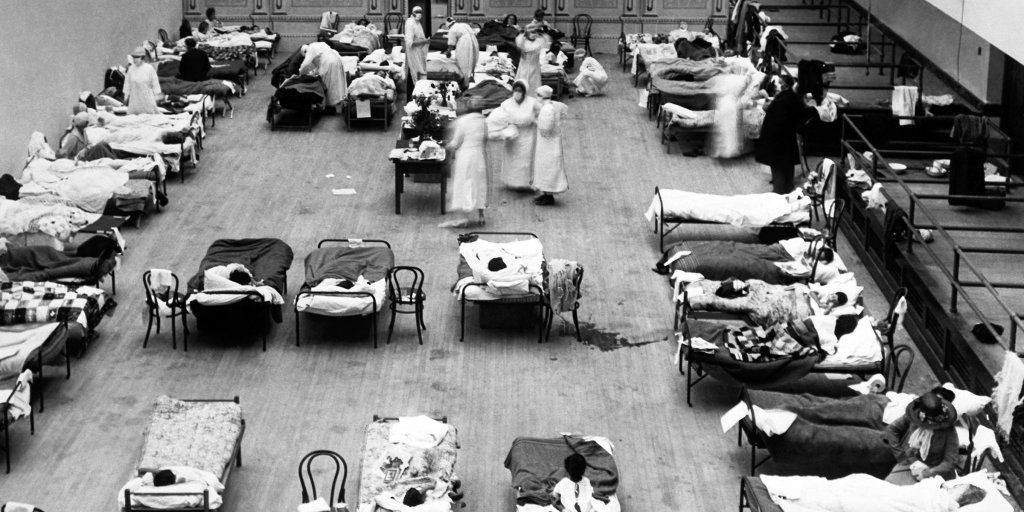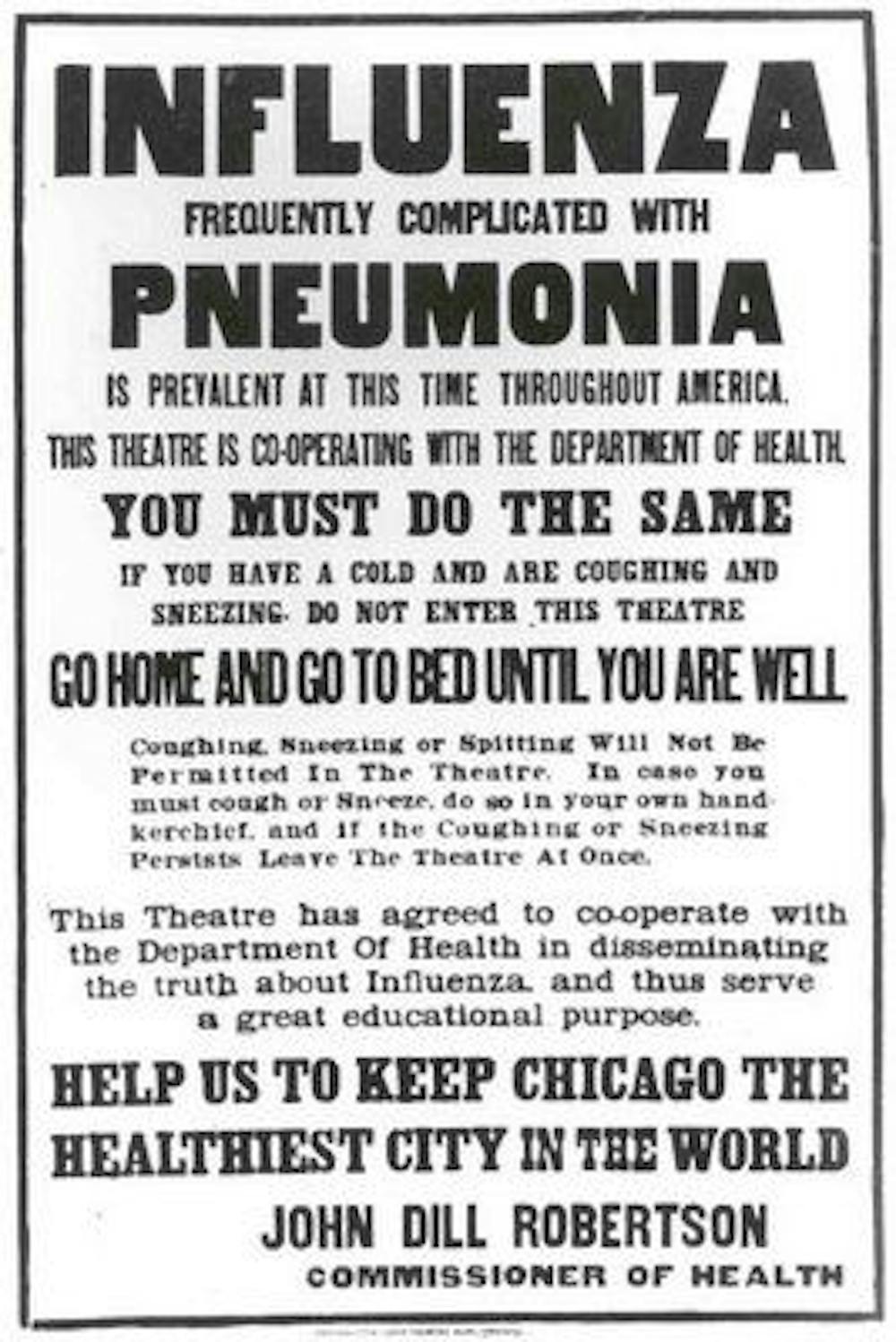The influenza pandemic of 191819 also called the Spanish flu lasted about one to two years. 1 year of the Spanish flu.
 The 1918 Influenza Pandemic One Hundred Years Of Progress But Where Now The Lancet Respiratory Medicine
The 1918 Influenza Pandemic One Hundred Years Of Progress But Where Now The Lancet Respiratory Medicine
The 1918 influenza pandemic was the most severe pandemic in recent history.

How long did 1918 flu epidemic last. Though the Spanish Flu Pandemic lasted a year and a half having started in January 1918 and mostly ended by June 1919 most deaths took place in a 16 week period from September to December 1918. Wherever it began the pandemic lasted just 15 months but was the deadliest disease outbreak in human history killing between 50 million and 100 million people worldwide according to. Philadelphia records 289 influenza-related deaths in a single day.
For example at Camp Devens Massachusetts US six days after the first case of influenza was reported there were 6674 cases. Within a week the number of flu cases quintuples. The influenza pandemic of 191819 also called the Spanish flu lasted between one and two years.
It infected 500000 millions of peoples killed 50 millions of peoples. How long did the Spanish flu pandemic last. More than 100 soldiers at Camp Funston in Fort Riley Kansas become ill with flu.
The Influenza pandemic of 1918 was a serious pandemic of influenza. About 500 million people were infected across the world with a population of 180 billion people. Over time those who contracted the virus developed an immunity to the novel strand of influenza and life returned to normal by the early 1920s according to historians and medical experts.
One of the deadliest pandemics in human history was the one that took place in 1918 when the Spanish Flu spread and had a toll of 50 million deaths all over the world. The sick who experienced such typical flu symptoms as chills. In the case of the 1918 pandemic the world at first believed that the spread had been stopped by the spring of 1919 but it spiked again in early 1920.
The pandemic occurred in three waves though not simultaneously around the globe. Although there is not universal consensus regarding where the virus originated it spread worldwide during 1918-1919. The death toll is estimated to have been 40 million to 50 million and possibly as high as 100 million making it one of the most deadly ever.
Pneumonia often developed quickly with death usually coming two days after the first indications of the flu. England had a high number of Spanish flu fatalities and recorded cases throughout the pandemic which began in 1918. However during the summer a more lethal type of disease was recognized and this form fully emerged in August 1918.
The Spanish flu lasted from Feb. How long did the influenza epidemic of 1918 last. The first wave of the 1918 pandemic occurred in the spring and was generally mild.
The unusually severe disease killed up to 20 per cent. Encyclopedia Britannica and the Center for Disease Control indicate that the pandemic occurred in three waves. Outbreaks of flu-like illness are first detected in the United States.
In the United States it was first identified in military personnel in spring 1918. In the Northern Hemisphere the first wave originated in the spring of 1918 during World War I. In the United States where it ultimately killed around 675000.
The first wave of influenza was comparatively mild. The influenza pandemic of 1918 and 1919 was the most deadly flu outbreak in history killing up to 50 million people worldwide. It was caused by an H1N1 virus with genes of avian origin.
The first wave was comparatively mild and. Although it remains uncertain where the virus first emerged the earliest cases in the United States were detected in. How long did the Spanish flu last in England.
1918 to April 1920. New Mexico which had remained largely untouched by the influenza reports its first case. The epidemic reaches Seattle Washington with 700 cases and one death at the University of Washington Naval Training Station.
The pandemic spread to remote Pacific Islands and the Arctic. It lasted for three years from January 1918 to December 1920. Sporadic flu activity spreads unevenly through the United States Europe and possibly Asia over the next six months.













